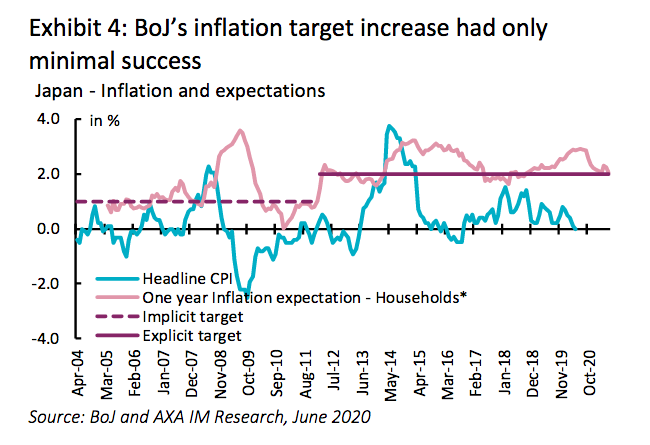Central banks have once again received criticism for the support they have provided to markets-to-date and their role as inflation targeters. Analysts at AXA IM’s view is that much of this criticism is misplaced:
A common criticism is that asset purchases exacerbate inequality. However, in so far as asset price increases are a feature of all types of monetary policy and that monetary policy is consistent with minimising unemployment –which we would argue was a more pernicious contributor to inequality–we are not convinced that an ex-post analysis will suggest a different role for central banks. Additionally, the one tool per objective limit to policy making suggests monetary policy has been reasonably successful at delivering low and stable inflation over recent decade sand is ill-suited to other policy goals, including tackling inequality. We expect central banks to remain inflation targeters. However, we do consider the possibility of a change to inflation targets themselves although we see the immediate pandemic impact as likely disinflationary through 2022. This has already been fore shadowed in the Fed’s and ECB’s Monetary Policy Reviews. Although neither of these has concluded, the Fed has hinted at shifting to an inflation-averaging target that would commit it to deliver an inflation overshoot after prolonged periods of sub-target inflation. The ECB was also rumoured to be dropping the asymmetric bias to its current target of “close to, but below 2%”. Such shifts would be subtle attempts to stop inflation expectations softening further –a risk we consider likely after the pandemic. Arresting the decline in inflation expectations is likely to be a necessary feature of meeting inflation targets consistently in the future. There is also a case to be made for raising inflation targets more generally. Most developed economy central banks find themselves for the second time in a decade pinned to the Emergency Lower Bound –some having never moved from it. This is a recognised side-effect of the fall in long-term real rates and can be expected to occur more frequently as real rates remain low and perhaps fall further. However, this constrains nominal monetary policy as central banks must keep nominal rates close to 0% at a minimum.
An increase in inflation targets would ease this lower bound constraint on conventional monetary policy. It may be considered that the cost of modest incremental inflation would not exceed the benefits of additional monetary policy flexibility. Indeed, inflation targets of around 2% that have come to characterise most major international central banks’ mandates were first adopted in the 1990s. What was an appropriate inflation target then may not be 30 years later as lower real rates have become more prevalent. However, that said, the experience of the Bank of Japan(BoJ)–which introduced a higher inflation target of 2% in 2013 –is that the impact on achieving that target –or managing expectations –can be two different things.






